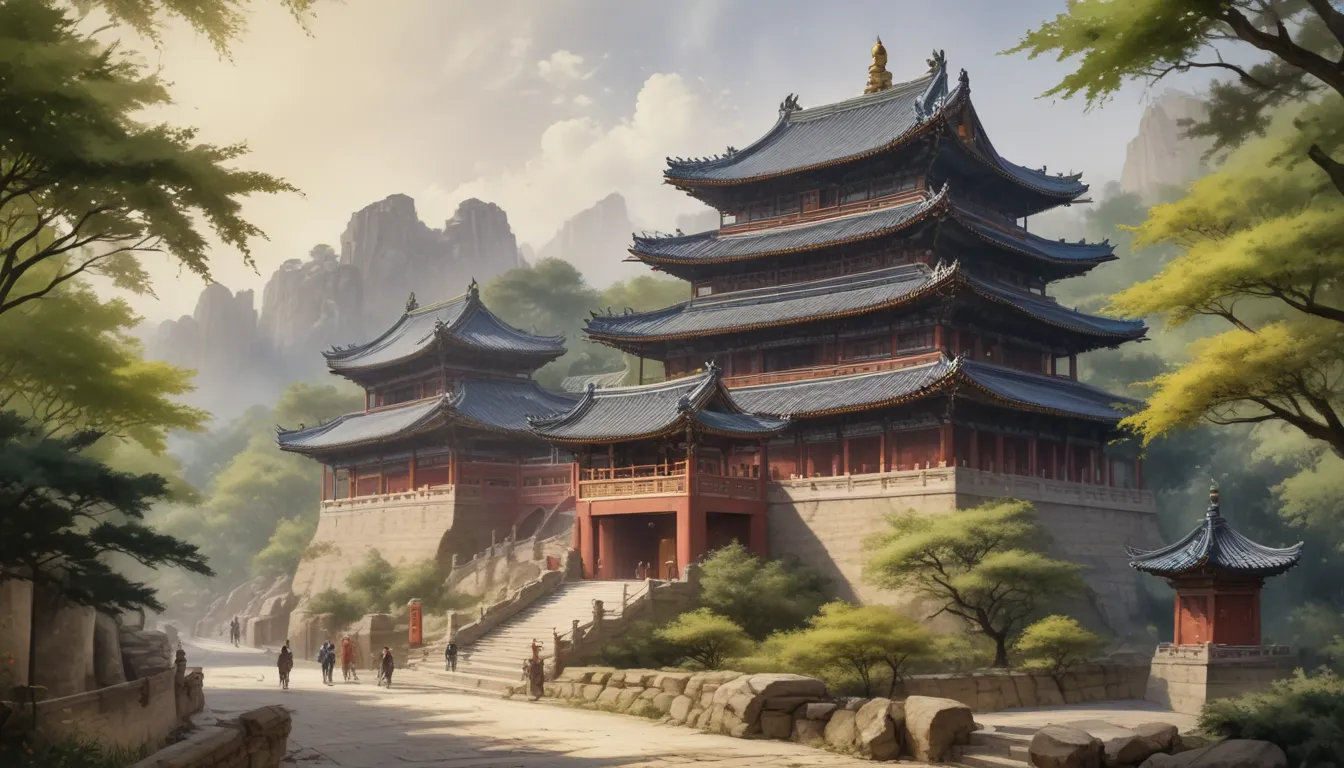The images in our articles are for illustrative purposes only and may not exactly match the content. They are intended to capture your interest and complement the text, not to replace it.
Welcome to the mesmerizing world of the Temple of Heaven, an architectural marvel nestled in the heart of Beijing, China. This sacred landmark, also known as Tiantan Park, is a testament to the rich history and cultural heritage of the Ming Dynasty, dating back to 1420. With its intricate designs, spiritual significance, and UNESCO World Heritage status, the Temple of Heaven beckons travelers and history enthusiasts alike to explore its wonders. In this article, we will uncover 20 surprising facts about the Temple of Heaven that will pique your curiosity and deepen your appreciation for this extraordinary site.
Exploring the Temple of Heaven
The Temple of Heaven stands as a testament to the harmonious relationship between heaven and earth. Here are some fascinating details about this iconic landmark:
- Location: Situated in Beijing, China, the Temple of Heaven is an ancient religious complex that serves as a symbol of Chinese religious architecture.
- Historical Roots: Built during the Ming Dynasty in the 15th century, the temple complex was a sacred site where emperors offered prayers and sacrifices for a bountiful harvest.
- Architectural Splendor: Spanning an area of 2.73 square kilometers, the Temple of Heaven boasts intricate designs, lush gardens, and the awe-inspiring Hall of Prayer for Good Harvests.
- UNESCO Recognition: Designated as a UNESCO World Heritage Site in 1998, the Temple of Heaven showcases the pinnacle of architectural design and ancient Chinese philosophy.
Delving Into the Temple’s Mysteries
Let’s further unravel the mysteries surrounding the Temple of Heaven:
- Echo Wall Wonder: The Echo Wall within the temple complex exhibits a unique acoustic feature where whispers can travel along the curved surface and be heard clearly on the other end, defying traditional laws of acoustics.
- Symbolic Significance: Rooted in ancient Chinese cosmology, the temple’s architecture symbolizes the harmonious connection between heaven and earth, reflecting a balance of spiritual beliefs.
- Historical Rituals: Throughout the Ming and Qing Dynasties, the Temple of Heaven hosted significant rituals and ceremonies conducted by emperors to maintain harmony between heaven and earth.
- Restoration Efforts: In the 19th century, the temple complex underwent extensive restoration to preserve its architectural grandeur and historical significance.
Unveiling Cultural Treasures
Discover the cultural significance of the Temple of Heaven:
- Symbol of Prosperity: Visiting the Temple of Heaven is believed to bring good luck and blessings, embodying a symbol of prosperity and spiritual well-being.
- Tourist Attraction: Drawing millions of visitors annually, the temple complex offers a glimpse into Chinese history, culture, and traditional performances.
- Artistic Inspiration: Artists and poets have been captivated by the temple’s beauty, with its graceful structures and tranquil settings inspiring various artistic expressions.
Unleashing the Temple’s Legacy
Explore the enduring legacy of the Temple of Heaven:
- Connection With Earth: The temple embodies the ancient Chinese belief in the interconnectedness of heaven and earth, showcasing a profound spiritual connection.
- Historical Significance: Over the centuries, the temple has witnessed significant historical events, adding to its cultural prominence and landmark status.
Conclusion: A Journey Through Time and Culture
In conclusion, the Temple of Heaven stands as a beacon of China’s rich history and architectural splendor. Whether you are an architecture enthusiast, history buff, or cultural explorer, this majestic landmark promises an unforgettable experience. From its iconic Hall of Prayer for Good Harvests to the enchanting Echo Wall, the Temple of Heaven invites you to immerse yourself in a world of mystique and wonder.
Embark on a journey through time and culture as you uncover the hidden gems of the Temple of Heaven. Delve into its captivating history, architectural beauty, and spiritual significance, and let the ancient rituals and legends enchant your senses.
FAQs: Unveiling More About the Temple of Heaven
Curious minds seek answers to common questions about the Temple of Heaven:
- Age of the Temple: The Temple of Heaven was constructed in 1420 during the Ming Dynasty.
- Significance of the Temple: Emperors of the Ming and Qing dynasties visited the temple to offer prayers for good harvests and divine blessings.
- Unique Features: The temple boasts unique architectural designs, including the Hall of Prayer for Good Harvests and the famed Echo Wall.
- Visitor Access: Yes, visitors are allowed to enter the Temple of Heaven, although certain areas may have restricted access for preservation.
- Public Accessibility: The Temple of Heaven is open to the public, welcoming visitors from around the world.
- Cultural Activities: Visitors can enjoy various cultural activities, such as tai chi and traditional performances, within the temple complex.
- Entrance Fees: There is an entrance fee to visit the Temple of Heaven, varying based on the season and access to additional areas.
- Nearby Attractions: Explore other nearby attractions, including the Forbidden City, Tiananmen Square, and the Summer Palace.
Unravel the mysteries of the Temple of Heaven, where ancient rituals and cultural heritage intertwine to offer a profound journey through China’s history and beliefs. Immerse yourself in a world of architectural wonders and spiritual significance as you explore this magnificent landmark.






